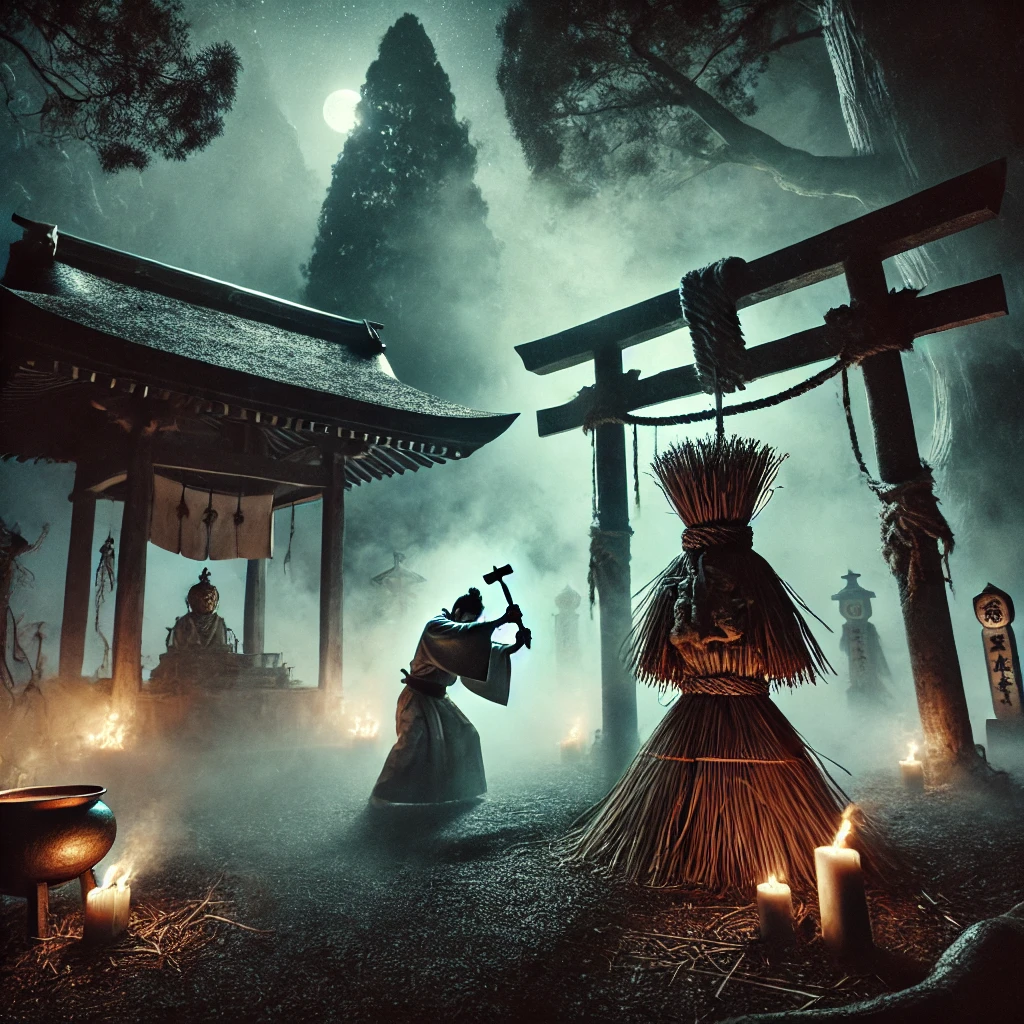In Japan, the practice of curses, or noroi (呪い), has deep roots in the country’s spiritual and cultural history, intertwining with Shintoism, Buddhism, and traditional folk beliefs. Curses in Japan have long been associated with both justice and vengeance, believed to harness spiritual forces to bring about retribution or harm. Here’s a brief overview of curseology in Japan:
Ancient Roots: Kami and Spirits
In ancient times, Japanese beliefs were shaped by Shintoism, the indigenous religion that centers on kami (spirits) residing in natural elements like trees, rivers, and mountains. Early forms of curses were often tied to displeased kami or ancestral spirits, with people using rituals to invoke their wrath upon enemies or wrongdoers. Shamans and spiritual leaders (like miko) could intercede with the spirits, and cursing became a way to restore balance when justice was not served.
Heian Era (794–1185): Rise of Onmyōdō and Urami
During the Heian period, Japan saw the formalization of Onmyōdō (陰陽道), a practice that mixed yin-yang cosmology with Shinto and Buddhist elements. Onmyōji (specialist practitioners of Onmyōdō) were often called upon to deal with curses, such as urami (怨み)—curses born from deep resentment or hatred. The Heian aristocracy both feared and used curses, employing Onmyōji to protect themselves or place spells on rivals.
One of the most feared forms of cursing in this period was the “Ushi no Koku Mairi” ritual, where a person would visit a Shinto shrine at the Hour of the Ox (between 1–3 a.m.) to curse their enemy. They would drive nails into a straw effigy representing the target, hoping to invoke a curse upon them. This ritual, still infamous today, reflects the long-standing belief in the power of curses to cause physical and spiritual harm.
Feudal Era: Samurai and Spirit Curses
During the Feudal period, the samurai class adopted spiritual practices to protect themselves in battle and exact revenge. They believed in tsukimono (憑き物)—possessions by spirits or animals, such as foxes (kitsune) or snakes, to bring misfortune upon enemies. Samurai also believed that unavenged deaths could create onryō (怨霊), vengeful spirits who cursed those responsible for their suffering. These spirits, unable to find peace, would curse those they believed wronged them, leading to stories of hauntings and retribution.
Edo Period (1603–1868): Curses in Popular Culture
In the Edo period, curses became a central theme in kabuki theater, ukiyo-e woodblock prints, and ghost stories (kaidan). Famous curses, such as that of Taira no Masakado, whose decapitated head was said to have flown back to Tokyo to exact revenge, became legendary. These tales often featured vengeful spirits, tormented by betrayal or murder, who cursed those responsible.
Edo Japan also saw the rise of folk curses, practiced by commoners seeking vengeance for personal grievances. Rural communities believed in mamori (protective charms) and omamori talismans, but for those seeking darker outcomes, there were curses designed to bring ill health or financial ruin to rivals. These curses were often hidden, placed in secret locations (like under houses) to gradually bring suffering.
Modern Curseology
In modern Japan, curseology remains present in folklore, popular culture, and certain religious practices. While the practice of cursing has faded from daily life, the belief in curses, spirits, and hexes continues. Modern superstitions and ghost stories, such as the cursed videotape in Ringu (The Ring), reflect how deeply the concept of curses is embedded in Japanese society.
Even today, some rural areas maintain practices of using effigies or hidden objects to symbolically bind an enemy’s power. Simultaneously, protective talismans (like ofuda and omamori) are more commonly used, reflecting a societal shift toward protection rather than harm.
Conclusion
Japanese curseology has evolved over centuries from its Shinto roots, incorporating Onmyōdō, Buddhist practices, and samurai traditions into a complex spiritual system of retribution and justice. Though the active practice of curses has diminished, the legacy of curses, vengeful spirits, and spiritual revenge continues to captivate Japanese culture through stories, rituals, and beliefs.
